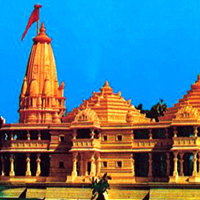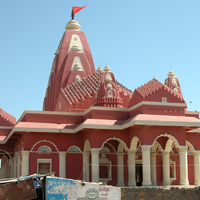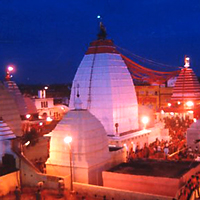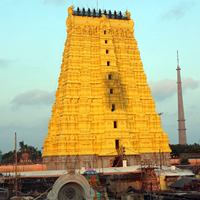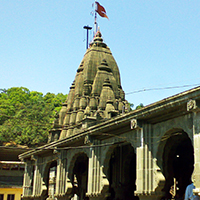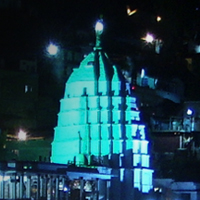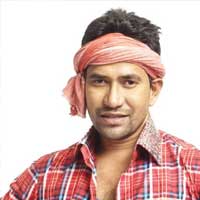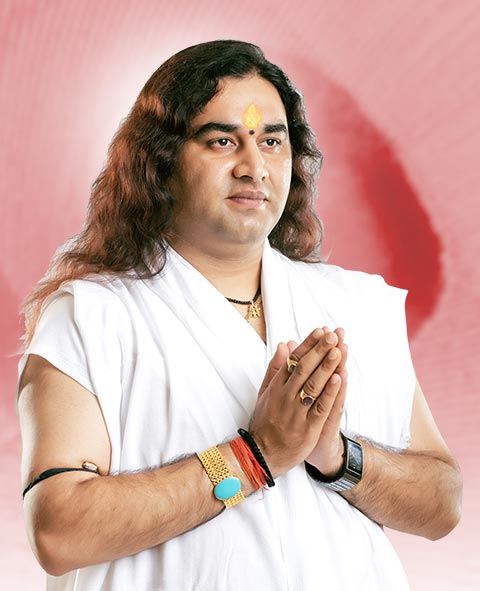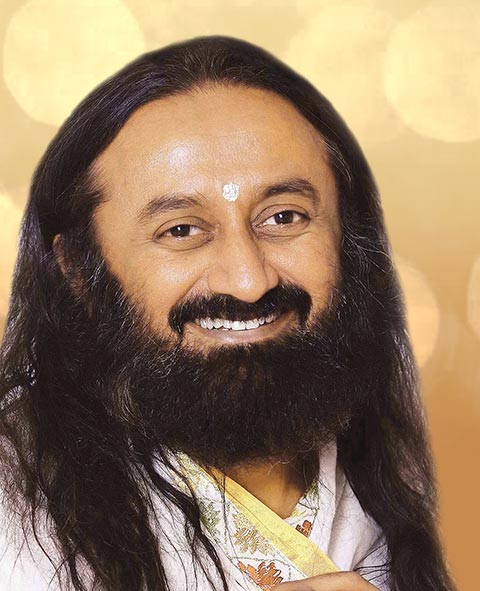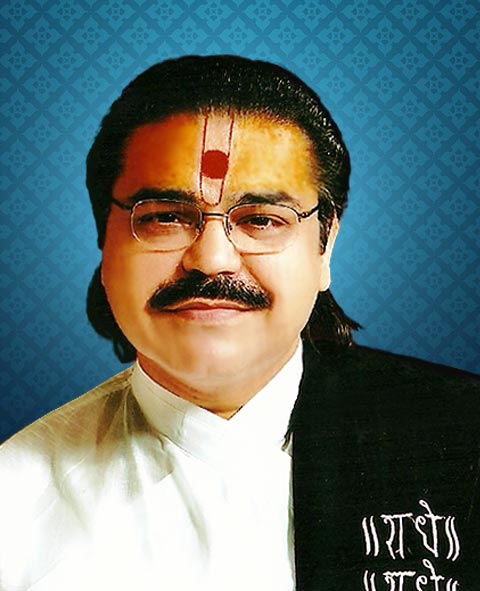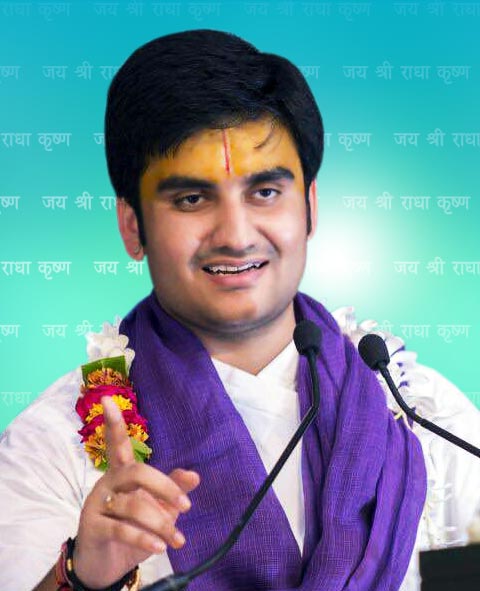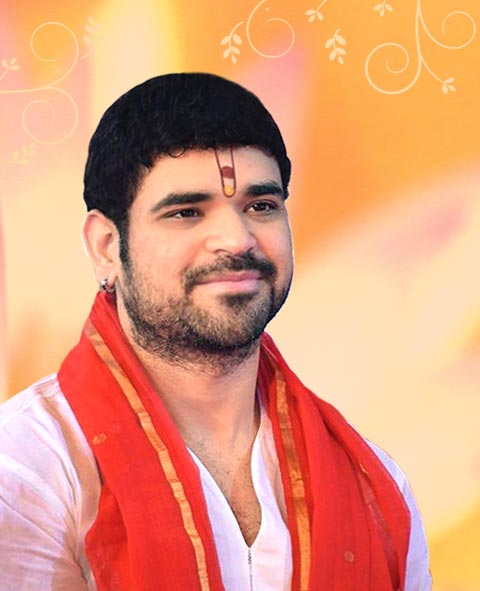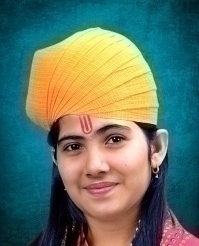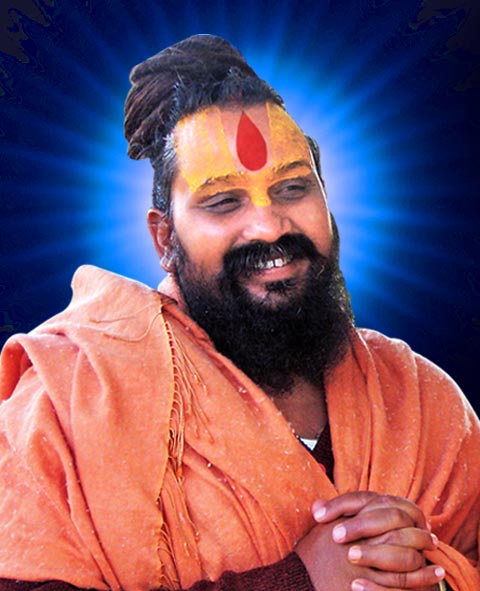Browse By Tample

Vaishno Devi
A pilgrimage to the Holy Shrine of Shri Mata Vaishno Devi Ji is considered to be one of the holiest pilgrimages of our times. Popular the world over as Moonh Maangi Muradein Poori Karne Wali Mata, which means, the Mother who fulfills whatever Her children wish for, Shri Mata Vaishno Devi Ji resides in a Holy Cave located in the folds of the three peaked mountain named Trikuta (pronounced as Trikoot). The Holy Cave attracts millions of devotees every year. In fact, the number of Yatris visiting the Holy Shrine annually now exceeds one crore. This is due to the unflinching faith of the devotees who throng the Shrine from all parts of India and abroad.
The Holy Cave of the Mother is situated at an altitude of 5200 ft. The Yatris have to undertake a trek of nearly 12 km from the base camp at Katra. At the culmination of their pilgrimage, the yatries are blessed with the Darshans of the Mother Goddess inside the Sanctum Sanctorum- the Holy Cave. These Darshans are in the shape of three natural rock formations called the Pindies. There are no statues or idols inside the Cave.
Darshans are open round the clock throughout the year.
Since the year 1986, when the Shri Mata Vaishno Devi Shrine Board (commonly called Shrine Board) was formed, the management of the Shrine and regulation of the Yatra has been vested in the Board. The Board has undertaken a number of developmental activities aimed at making the Yatra a comfortable and satisfying experience for the Yatris. The Board continues to reinvest the offerings and donations received in carying out improvements in various kinds of Yatri facilities.
The journey to the Holy Shrine of Shri Mata Vaishno Devi Ji starts with the Call of Mata. It is not only a belief but also a strong experience of one and all that the Divine Mother sends a call to her children. And once a person receives it, wherever he is, is bound to visit the Mother to receive Her unbounded love and blessings. A popular slogan in the local folklore beautifully expresses it- Maan Aap Bulandi - which means that The Mother Herself Calls! It is also a matter of experience by almost all those who visit the Holy Shrine that upon the Call of Mata, a person needs to just take one step and leave the rest to Her and his journey gets completed with Her divine blessings.
Simultaneously, it is also believed that unless there is a call or Bulawa no one can visit the Shrine or have Her blessings, howsoever high or mighty one may be.
History of the Holy Shrine
Like with most old Shrines, it is not possible to ascertain when exactly the pilgrimage to the Holy Shrine started. A geological study of the Holy Cave has indicated its age to be nearly a million years. Vedic literature gives no reference to the worship of any female deity, although the mountain Trikuta does find its mention in Rigveda, the oldest of the four Vedas The practice of worshipping Shakti, largely started in the Puranic period.
The first mention of the Mother Goddess is in the epic Mahabharat. When the armies of Pandavs and Kaurvas were arrayed in the battlefield of Kurukshetra, Arjun, the chief warrior of Pandavs upon advice of Sri Krishna; meditated upon the Mother Goddess and sought Her blessings for victory. This is when Arjun addresses the Mother Goddess as ‘Jambookatak Chityaishu Nityam Sannihitalaye’, which means ‘you who always dwell in the temple on the slope of the mountain in Jamboo’ (probably referring to the present day Jammu).
It is also generally believed that the Pandavs were the first to build the temples at Kol Kandoli and Bhawan in reverence and gratitude for the Mother Goddess. On a mountain, just adjacent to the Trikuta Mountain and overlooking the Holy Cave are five stone structures, which are believed to be the rock symbols of the five Pandavs.
Perhaps the oldest reference of the visit of a historical figure to the Holy Cave is that of Guru Gobind Singh who is said to have gone there via Purmandal. The old foot track to the Holy Cave passed through this well-known pilgrimage centre.
Some traditions believe this Shrine to be the holiest of all Shaktipeeths (a place where the Mother Goddess, the Eternal Energy has Her abode) since the skull of Mata Sati fell here. Others believe that her right arm had fallen here. But some scriptures do not agree with it. They do agree that at a place called Gandarbal in Kashmir, the right arm of Sati had fallen. Nevertheless, in the Holy Cave of Shri Mata Vaishno Deviji, one does find stone remains of a human hand, popularly known as Varad Hast (the hand that grants boons and blessings).

Discovery of The Shrine
While various versions of the origin and legend of Shri Mata Vaishno Devi Ji are prevalent, there seems to be unanimity on the discovery of Shrine around 700 years back by the same Pandit Shridhar, at whose place Mata had helped organize a Bhandaara. When she left amidst the Bhandaara to escape Bhairon Nath, Pandit Shridhar is said to have felt as if he had lost everything in his life. He felt immense grief and gave up the intake of food or even water and closed himself in a room of his house, fervently praying for Vaishnavi to reappear.
It is then that Mata Vaishnavi appeared in his vision (dream) and told him to search for her at the Holy Cave situated amidst the folds of the Trikuta Mountain. She showed him the way to the Holy Cave and insisted him to break his fast. Pandit Shridhar then went on to discover the Holy Cave in the mountains. Every time he seemed to lose the way, the vision of his dreams reappeared before his eyes and finally he reached his destination. Upon entering the Cave he found a rock form with three heads atop it. At that moment Mata Vaishno Devi appeared before him in all her glory (another version says that the Supreme Energies of Mata Maha Saraswati, Mata Maha Lakshmi and Mata Maha Kali appeared in the Holy Cave) and introduced him to the three heads (now known as the Holy Pindies) of the rock form along with various other identification marks in the Holy Cave. She blessed him with a boon of four sons and a right to worship her manifestation and asked him to spread the glory of the Holy Shrine all over. Pandit Shridhar then spent his remaining life in the service of Mata at the Holy Cave.
Story Of Maa Vaishno
As per the legend, during the period when the Goddess was busy in annihiliting the Asuras, Her three main manifestations viz. Mata Maha Kali, Mata Maha Lakshmi and Mata Maha Saraswati got together one day and pooled their collective Tejas or spiritual strength. A stunningly bright light emanated from the place where the Tejas of the three manifestations coalesced and a beautiful young girl emerged out of this Tejas. The young girl asked them, "Why have I been created?'' The Devis explained to her that they had created her so that she would live on earth and spend her time in upholding righteousness.
The Devis added, "Now, go and take birth in the house of Ratankar and his wife who reside in the southern part of India, and who are great devotees of ours. Live on earth. Uphold righteousness and evolve yourself spiritually so that you reach higher levels of consciousness. Once you have attained the appropriate level of consciousness you will merge into Vishnu and become one with him.'' So saying they blessed the girl. Sometimes later a very beautiful girl child was born to Ratankar and his wife. The couple named the child Vaishnavi. The girl right from her childhood displayed a hunger for knowledge which was like a vortex and which no amount of teaching and learning could sufficiently satiate. Subsequently, Vaishnavi started looking into her inner self for knowledge, and soon learned the art of meditation and realized that meditation and penance only could bring her close to her greater objective. Vaishnavi thus relinquished all household comforts and went deep into the forest for Tapasaya (meditation). Meanwhile, Lord Rama, during his fourteen years of exile happened to visit Vaishnavi who recognized him immediately as no ordinary being but the incarnation of Lord Vishnu, and immediately asked him to merge her into himself so that she could become one with the supreme creator.
However Lord Rama, knowing that it was not the appropriate time, dissuaded her by saying that he would visit her again after the end of his exile, and at that time if she succeeded in recognizing him, he would fulfill her wish. True to his words, Rama visited her again after being victorious in the battle, but this time he did so in the disguise of an old man. Unfortunately, Vaishnavi was unable to recognize him this time and was distraught. Upon this, Lord Rama consoled her that the appropriate time for her being one with the creator had not come, and that time would come eventually in 'Kaliyug' when He (Rama) would be in his incarnation of 'Kalki'. Rama also directed her to meditate, and set up an Ashram at the base of Trikuta hills, to elevate her level of spirituality so as to bless mankind and rid the poor and destitute of their sufferings.Only then would 'Vishnu' merge her into himself. Vaishnavi, immediately set off for the northern part and after immense hardships, reached the foot of the Trikuta Hills. After reaching there she set up her ashram there and began to meditate.
As predicted by Lord Rama, her glory spread far and wide, and people began to flock to her Ashram to seek her blessings. As time passed, MahaYogi Guru Goraksh Nath ji who had a vision of the episode between Lord Rama and Vaishnavi in the retrospective time frame, became curious to find out whether Vaishnavi has been able to attain a high level of spirituality or not. He, therefore, sent his most able disciple 'Bhairon Nath' to find out the truth. Bhairon Nath on locating the ashram started observing Vaishnavi secretly, and realised that though a 'Sadhvi' she always carried bow and arrows with her, and was always surrounded by langoors (apes) and a ferocious looking lion. Bhairon Nath was enamored by Vaishnavi's extraordinary beauty, and losing all good sense he began to pester Vaishnavi to marry him. Meanwhile a staunch devotee of Vaiashnavi, Mata Sridhar organised a Bhandara (Community meal) in which the whole village and MahaYogi Guru Goraksh Nath ji along with all his followers including Bhairon were invited. During the course of Bhandara Bhairon Nath attempted to grab Vaishnavi but she tried her best to daunt him. On failing to do so, Vaishnavi decided to flee away into the mountains to continue her Tapasaya undisturbed. Bhairon Nath however chased her to her destination.
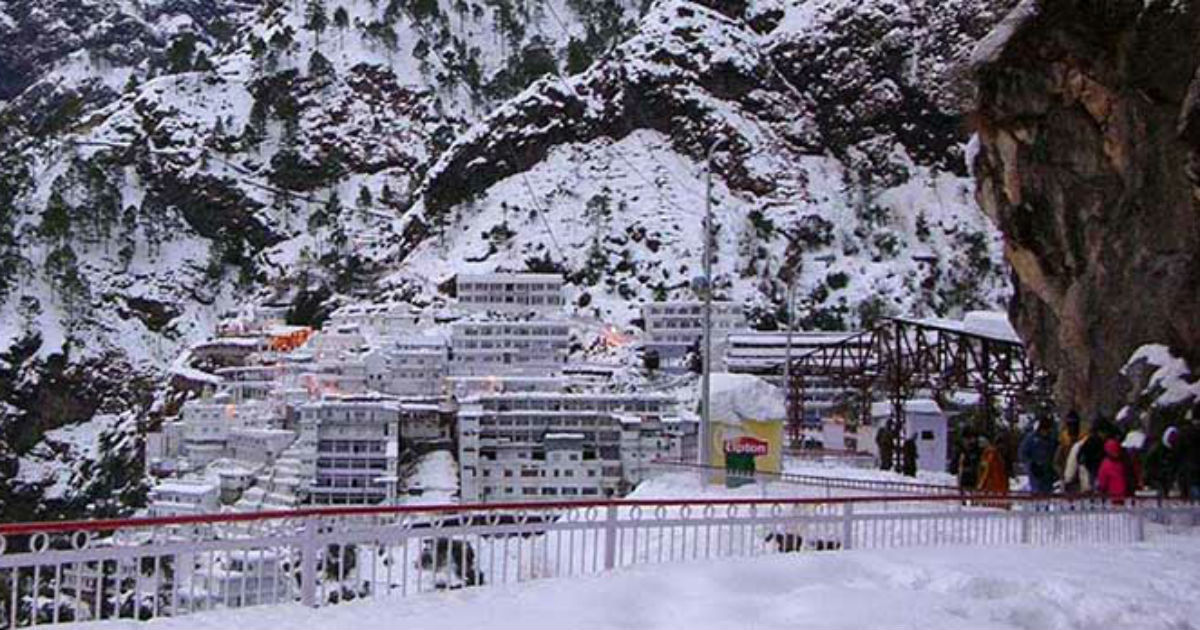
The goddess after halting at (present day) Banganga, Charan Paduka, and Adhkwari, finally reached the holy cave Shrine. When Bhairon Nath continued to follow her despite the goddess trying to avoid a confrontation, the goddess was compelled to kill him. Bhairon Nath met his ultimate fate when the goddess, just outside the mouth of the cave, beheaded him. The severed head of Bhairon fell with a force at a distant hilltop. Bhairon Nath upon death realised the futility of his mission and prayed to the deity to forgive him. The almighty Mata ( Mother Goddess) had mercy on Bhairon and gave him a boon that every devotee of the goddess would have to have the Darshans of Bhairon after having the Darshans of the Goddess and only then would the yatra of a devotee be complete. Meanwhile, Vaishnavi decided to shed off her human form and assuming the face of a rock she immersed her self into meditation forever. Thus Vaishnavi, in the form of a five and a half feet tall rock with three heads or the Pindies on the top is the ultimate destination of a devotee. These Pindies constitute the Sanctum Sanctorum of the holy cave known as the shrine of Shri Mata Vaishno Devi Ji, which is revered by one and all.
The Story of Pandit Sridhar
Amongst the many legends associated with the Shrine of Mata Vaishno Devi, is that of Lord Rama's encounter with Vaishnavi during the period of his exile when he (Lord Rama) directed the Goddess towards the holy cave situated in Trikoot Parbat. There are other legends too, like that of the Pandavas, who are said to have visited the holy abode and are also believed to have built a temple here. Prahalad, the legendary son of the atheist king Hirankashayap, is also believed to have undertaken a pilgrimage to the holy shrine. However, the most popular and well known legend is that of Sridhar Brahmin who used to live in village Hansali situated at the foot of Trikoot Parbat, adjacent to modern day Katra Town.
Shridhar was a staunch devotee of Shakti. Even though he was a very poor man, with the inspiration and assurance from Goddess Vaishanavi who appeared one day in his dream in Kanayaroop, Sridhar undertook the organizing of a grand Bhandara. An auspicious date for the Bhandhara was selected and Shridhar invited all the people living in nearby villages to the Bhandara. Thereafter, Sridhar went from door to door requesting his neighbours and acquaintances to give him raw provisions which could be cooked and served to the guests on the day of Bhandara. Though a few of them obliged but many others turned down his request. They in fact taunted him for having the audacity to hold a Bhandara without having the wherewithal for organizing. As the day of Bhandara drew nearer, Shridhar's worries about feeding the guests invited for Bhandhara also increased.
On the night preceding the day of Bhandara, Shridhar could not sleep a wink. He had spent the entire night grappling with the problem of how to feed his guests with the limited provisions and to accommodate them in the inadequate space that he had. When he was unable to come up with a satisfactory solution to his problems till morning, he resigned himself to fate and got up to face the day. He sat down for puja outside his hut. By midday, his guests started arriving. Finding him deeply involved in puja, they began to make themselves comfortable wherever they could find place. Strangely enough, a very large number of guests were able to comfortably have their space inside Sridhar's small hut and still a lot of space was unutilized. When the puja was over, Shridhar looked around and saw huge number of guests who had arrived. While he was wondering how to tell his guests that he would not be able feed them, he saw Vaishnavi coming out of his hut. With the grace of Goddess Vaishanvi, all guests were offered food of their own choice and the Bhandhara turned out to be very successful despite some problems raised by Bhairon, a disciple of Guru Gorakhnath who too was invited in the Bhandhara.
After the Bhandhara, Sridhar was curious to get to the bottom of the mystery shrouding the magical powers of Vaishanavi. He began asking young Vaishnavi for an explanation for the mysterious developments of the day. He called out to her but the Vaishanavi was not there to reply. He called out again and again but with the same result. Vaishnavi was no where to be seen. A feeling of emptiness engulfed Sridhar. Then one day, he had a dream of the same girl who told him that she was Vaishno Devi. The Goddess showed him the vision of her cave and also blessed him with the boon of four sons. Sridhar, happy once again, set out in search of the cave, and after finding it he decided to spend rest of his life in worship of the deity. Soon fame of the holy cave spread, and the devotees began to flock it to pay their homage to the mighty Goddess.
The Story of Madhu & Kaithab
At the beginning of time there was only the primeal ocean all around. Vishnu lay on Sheshnag in deep slumber under the influence of Yog Nidra. While Vishnu slept a lotus stalk grew out of his navel. At the upper end of the stalk was a lotus flower. Brahma was born in the lotus flower and was in deep meditation at the time of his birth. As Brahma lay in deep meditation in the lotus flower reciting the Vedas, ear wax flowed out of both ears of Vishnu.
Two Asuras known as Madhu and Kaitabh were born out of the ear wax. These Asuras Performed great penance for thousands of years. The Goddess was pleased with their devotion, appeared before them and granted them the boon that death would come to them only when they desired it. Being conscious of their immense strength, both the Asuras became arrogant. They attacked Brahma and stole away from him the four Vedas. Brahma though furious, was helpless in the face of great might of the Asuras. Hence he rushed in great consternation to Vishnu to seek his protection.
Vishnu, however, was in deep sleep under the influence of Yog Nidra and did not wake up inspite of the best efforts of Brahma. When Brahma realised that he could not wake up Vishnu in the normal course as he was sleeping under the influence of Yog Nidra. He then beseeched and praised 'Yoga Nidra to help him awaken Vishnu. . The fervent prayers of Brahma pleased Yog Nidra. She took pity on Brahma's plight and left Vishnu's body . As soon as Yog Nidra left his body, Vishnu woke up. Brahma told him about the murderous intent of Madhu and Kaitabh and entreated him to destroy them. Thus Lord Vishnu engaged in a fierce and long battle with the two Asuras at the end of which he killed them. In the episode of Madhu and Kaitabh, Goddess Durga has been portrayed as the 'Yoga Nidra' whose powerful influence renders even Lord Vishnu helpless.
